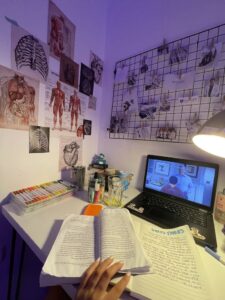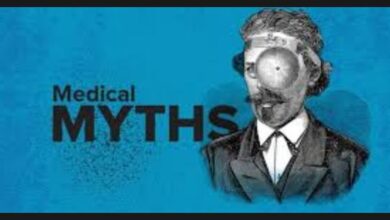The Dangerous Mistake Everyone Makes When Reading in Medical School

The Dangerous Mistake Everyone Makes When Reading in Medical School — Medical school isn’t just hard—it’s a full-on mental marathon. From the moment you crack open your first anatomy book, you’re inundated with facts, charts, diagrams, and clinical jargon that you’re expected to not only memorize, but understand and apply. It’s no wonder that students default to one familiar skill they’ve honed for years: reading. But here’s the harsh truth that no one tells you early enough—reading in medical school the same way you did in undergrad is one of the most dangerous mistakes you can make. And the longer it takes to unlearn that habit, the more you’ll struggle.
So what exactly is this mistake? It’s not just about what you read—it’s how you read. Medical students often fall into the trap of passive reading, and it’s silently killing their productivity, comprehension, and exam scores. This article is going to dig deep into what passive reading looks like, why it’s ineffective in medical education, and how to completely transform your study strategy for better results (and less burnout).

What Is Passive Reading and Why Is It a Trap?
You know the scene: you’re sitting at your desk, highlighter in hand, textbook open. You start at the top of the page and read line by line. You might even color-code some terms, nod at a few “aha” moments, and convince yourself you’re making progress. A few hours later, you close the book, feeling accomplished—until you realize you can barely recall anything you read.
That’s passive reading. It gives the illusion of learning without actual retention. It’s reading without actively engaging your brain in a way that translates to long-term memory or practical application.
Medical education is not about gathering information—it’s about transformation. You’re training to be a decision-maker, someone who can synthesize complex knowledge and make life-saving calls. If you’re just highlighting and rereading chapters, you’re not building the mental muscles you need for that level of performance. You’re just treading water.
Why Medical School Demands a Different Reading Strategy
Let’s be clear: this isn’t high school biology or even undergraduate biochem. The volume and depth of information in med school is overwhelming by design. It forces you to adapt—or drown.
Every subject in medical school builds on layers of knowledge. If your foundation is weak because you only “read through” topics instead of truly learning them, your understanding will crumble under pressure. Passive readers often find themselves rereading chapters multiple times, pulling all-nighters before exams, and still feeling unprepared. Why? Because their brains are not being trained to retrieve or apply that information.
Active learning, not passive reading, is what builds clinical intuition. It’s what helps you recognize patterns, connect concepts, and make accurate judgments when it matters most.
The Brain Science Behind Ineffective Reading
Here’s something most students don’t realize: your brain has specific conditions under which it retains and processes information best. Simply looking at words on a page isn’t one of them. Neuroscience tells us that the brain retains information more effectively when it’s involved in retrieval practice, self-testing, and elaborative rehearsal—all of which are missing from passive reading.
When you read without testing yourself, without applying what you’re reading, or without linking it to existing knowledge, your brain doesn’t encode the information efficiently. That’s why you can “read” for hours and still feel like nothing sticks.
Think of it this way: your brain is not a sponge; it’s more like a muscle. You have to work it, challenge it, and give it feedback to grow. Reading passively is like lifting a dumbbell once and expecting to gain strength. It’s just not how learning works.
The High Cost of Reading the Wrong Way
Many students don’t realize the cost of this mistake until it’s too late. Failing exams, low board scores, burnout, and even imposter syndrome often trace back to poor study methods. The tragedy is, these students are not lazy or unintelligent—they’re just relying on ineffective strategies.
Some even double down on reading. They think if they spend more hours with the textbook, they’ll eventually “get it.” But more time spent passively reading doesn’t equal better results. In fact, it often leads to cognitive fatigue, stress, and a dangerous loss of confidence.

What You Should Do Instead: Active Reading for Med School
So, how do you avoid this trap? The solution lies in active learning, which completely changes how you interact with medical material. Here’s how to get started:
1. Use Questions to Drive Your Reading
Before opening your textbook, ask yourself: What am I trying to understand? Instead of reading for the sake of “getting through the chapter,” approach it with a purpose. Write down questions like:
What are the clinical consequences of this disease?
How do I differentiate this condition from others?
Why does this treatment work on a biochemical level?
These questions prime your brain to look for answers, turning passive reading into an active search.
2. Engage in Retrieval Practice
After reading a section, close the book and quiz yourself. Can you explain what you just read in your own words? Can you draw the pathway from memory? Retrieval practice is the most evidence-based learning technique for long-term retention.
Use flashcards (Anki is gold in med school), create one-pagers from memory, or teach the concept to a study partner. If you can’t recall it, you haven’t learned it yet.
3. Interleave and Space Your Reading
Don’t read entire chapters on one topic in one sitting. Instead, mix up subjects (interleaving) and review information over time (spaced repetition). This forces your brain to continually retrieve and reprocess the material, which strengthens memory and understanding.
Example: Study the cardiovascular system one day, switch to neuro the next, and circle back to cardio later that week. Spaced repetition tools like Anki automate this process for you.
4. Make Diagrams and Teach It Back
Medical knowledge is highly visual. Instead of passively reading through descriptions, draw your own diagrams. Recreate pathways, sketch out clinical presentations, and map relationships between systems.
Better yet, teach what you’ve learned to a friend or even to yourself out loud. The Feynman technique—explaining concepts in simple terms—is one of the fastest ways to uncover gaps in understanding.
The Role of Practice Questions and Cases
Textbooks provide knowledge, but questions build wisdom. If you’re not practicing board-style questions weekly, you’re doing yourself a disservice. Question banks like UWorld, AMBOSS, and NBME self-assessments train your brain to apply knowledge, identify patterns, and avoid traps.
After doing practice questions, don’t just read the answer—study the explanation. Understand why each answer is right or wrong. This kind of feedback loop is where real learning happens.
When You Should Still Read—and How to Do It Right
To be clear, reading is still essential. You just have to do it strategically. Use textbooks to build foundational knowledge, but avoid getting stuck there. Treat reading as a warm-up, not the whole workout.
Here are some tips to make reading active:
Turn headings into questions.
Summarize sections in your own words.
Pause frequently to recall.
Use concept maps and highlight relationships, not just keywords.
The Shift That Changes Everything
Medical school is not a test of how much you can read. It’s a test of how well you can think, recall, and apply. The students who thrive aren’t always the smartest—they’re the ones who study smarter.
So if you’ve been reading and re-reading your notes hoping it will all magically stick, stop. That’s the dangerous mistake.
Read: Your Workout Is Weakening Your Bones If You Skip This One Move
The moment you start treating your brain like a tool that needs challenge, feedback, and engagement, everything changes. You’ll learn faster, retain more, and walk into exams with confidence—not just because you read the material, but because you own it.
It’s not too late to change your strategy. Your future patients—and your future self—are counting on it.






